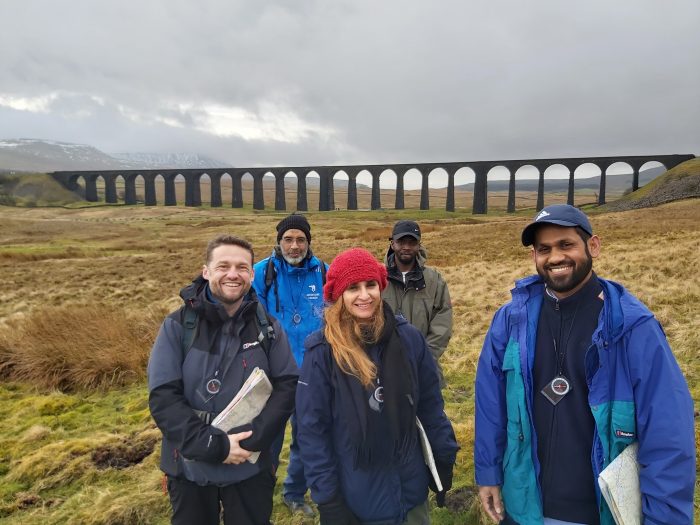Stories in Stone – legacy of the Ingleborough landscape programme
May 20, 2021
Stories in Stone, our Ingleborough landscape programme, was completed in March, but it leaves a lasting impact on the landscape and communities of the Ingleborough area.
Having delivered more than 170 different projects, the programme has enhanced a wide range of natural, built and cultural heritage in this special part of the Dales. It leaves behind a real legacy for social inclusion, education, environmental youth work and apprenticeships.
We caught up with programme manager Don Gamble to find out about the scheme’s impact and his highlights…
Hello Don, could you describe how the Stories in Stone project began?
The original idea for a landscape project in the south west corner of the National Park area came up in 2013. Over the next couple of years YDMT and partners consulted local people and developed a funding application for the National Lottery Heritage Fund. This explained in detail why the area is so important for geology, culture, heritage and people and what we could do to help protect, enhance and celebrate it. The bid was approved in 2015 and the scheme began in early 2016 when we recruited the whole team.
It’s been a genuine partnership involving a wide range of individuals, groups and organisations, and we’re really grateful to everyone who helped make it so successful.

When you talk about a landscape project, many people will think of work such as drystone walling and habitat creation. Stories in Stone was different as it achieved so much beyond the physical landscape.
The scheme was always going be very broad in what we were trying to achieve in terms of the landscape above and below ground as well as the cultural and historical heritage of the area. What did surprise me was how much the grant schemes achieved. We specifically put pots of money aside so we could react positively to new project ideas and proposals that would naturally emerge.
Initially, we wanted to do 60 projects, but I think within the first two years we upped that to 90. Now we have come to the end of the scheme we have completed 170 – a real legacy for Stories in Stone. 80 of those are the people-led schemes and ideas that just needed a bit of funding to get them off the ground. These included courses, events, books and all sorts of different ideas. It was amazing that we enabled all this great stuff to happen.
Is there a particular project that has been your favourite to be part of?
Ingleborough for All and its work to bring disadvantaged groups and individuals to the Dales has been truly humbling. We have been told how that project has changed lives; it is some of the most profound work we will ever get involved in. Then there’s the Schools Out project; who knows how many of the kids we have brought to Ingleborough or taken to Ingleborough Cave will have been enthused to go on to something else because of what they’ve been shown on their doorstep.

The restored toposcope and shelter on Ingleborough summit is another personal favourite. It’s symbolic in a way because most of the projects have happened in the valley bottoms or the sides. It wasn’t in the original scheme plan but the shelter, restored with the help of the Yorkshire Dales National Park Authority, will be an enduring legacy and have a positive impact on thousands and thousands
of people.
One of the most interesting results came from the community archaeology project at the deserted hamlet of Thorns near Ribblehead. An excavation there unearthed several pieces of a pot and when it was reconstructed it turned out to be a forenoon bottle made in the early 1800s and used by farmworkers to hold their beer! That was such a lovely link to the past.
If a visitor comes to the Ingleborough area in 20 years’ time, what do you hope the impact of Stories in Stone will have been?
You’d definitely expect the barns and walls we restored to be there – and you’d hope the land would be even better managed for wildlife and public access as a direct result of the scheme. Then you have the knowledge, findings and the whole array of publications that people can draw upon. The community archaeology has changed our understanding of the area and revealed how people settled here. Even if the books aren’t themselves available widely, academics and researchers will be picking up on them and using those findings as foundations for further study.
Find out more about the Stories in Stone programme.






